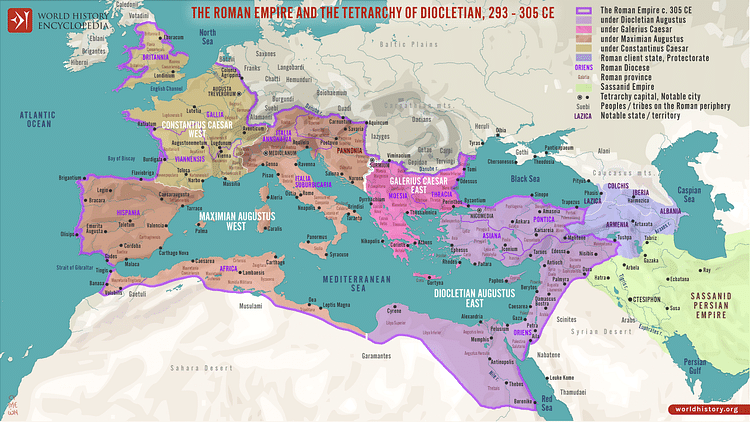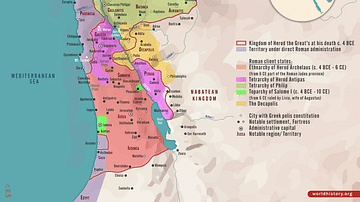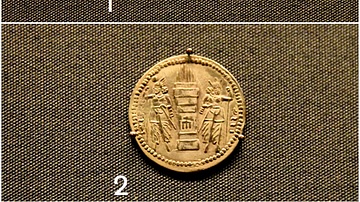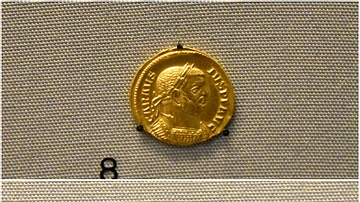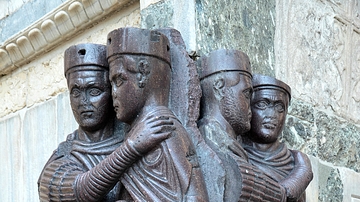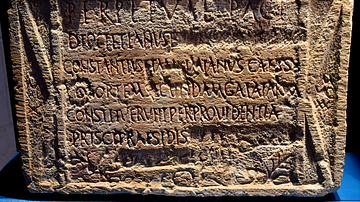Illustration
A map illustrating the Tetrarchy (from the Greek tetrarchia, "leadership of four"), established by the Roman Emperor Diocletian in 293 CE. It was a radical restructuring of the Roman Empire's governance system aimed at addressing its political and military challenges.
Diocletian divided the empire into four administrative units, each governed by two co-emperors: Augustus, who was the senior ruler, and Caesar, who served as the junior partner. This system of dual rule was intended to decentralize power, enhance administrative efficiency, and facilitate smoother succession. The Tetrarchy was also designed to provide a more effective defense against external threats by distributing military command across multiple regions. The Tetrarchs were expected to work together closely, with the Augusti guiding and mentoring their designated successors, the Caesars. After Diocletian and Maximian retired in 305 CE, the system began to unravel, leading to a series of civil wars and the eventual collapse of the Tetrarchic structure.
Cite This Work
APA Style
Netchev, S. (2024, February 23). The Roman Empire and the Tetrarchy of Diocletian, 293 - 305 CE. World History Encyclopedia. Retrieved from https://www.worldhistory.org/image/18530/the-roman-empire-and-the-tetrarchy-of-diocletian-2/
Chicago Style
Netchev, Simeon. "The Roman Empire and the Tetrarchy of Diocletian, 293 - 305 CE." World History Encyclopedia. Last modified February 23, 2024. https://www.worldhistory.org/image/18530/the-roman-empire-and-the-tetrarchy-of-diocletian-2/.
MLA Style
Netchev, Simeon. "The Roman Empire and the Tetrarchy of Diocletian, 293 - 305 CE." World History Encyclopedia. World History Encyclopedia, 23 Feb 2024. Web. 02 May 2024.
